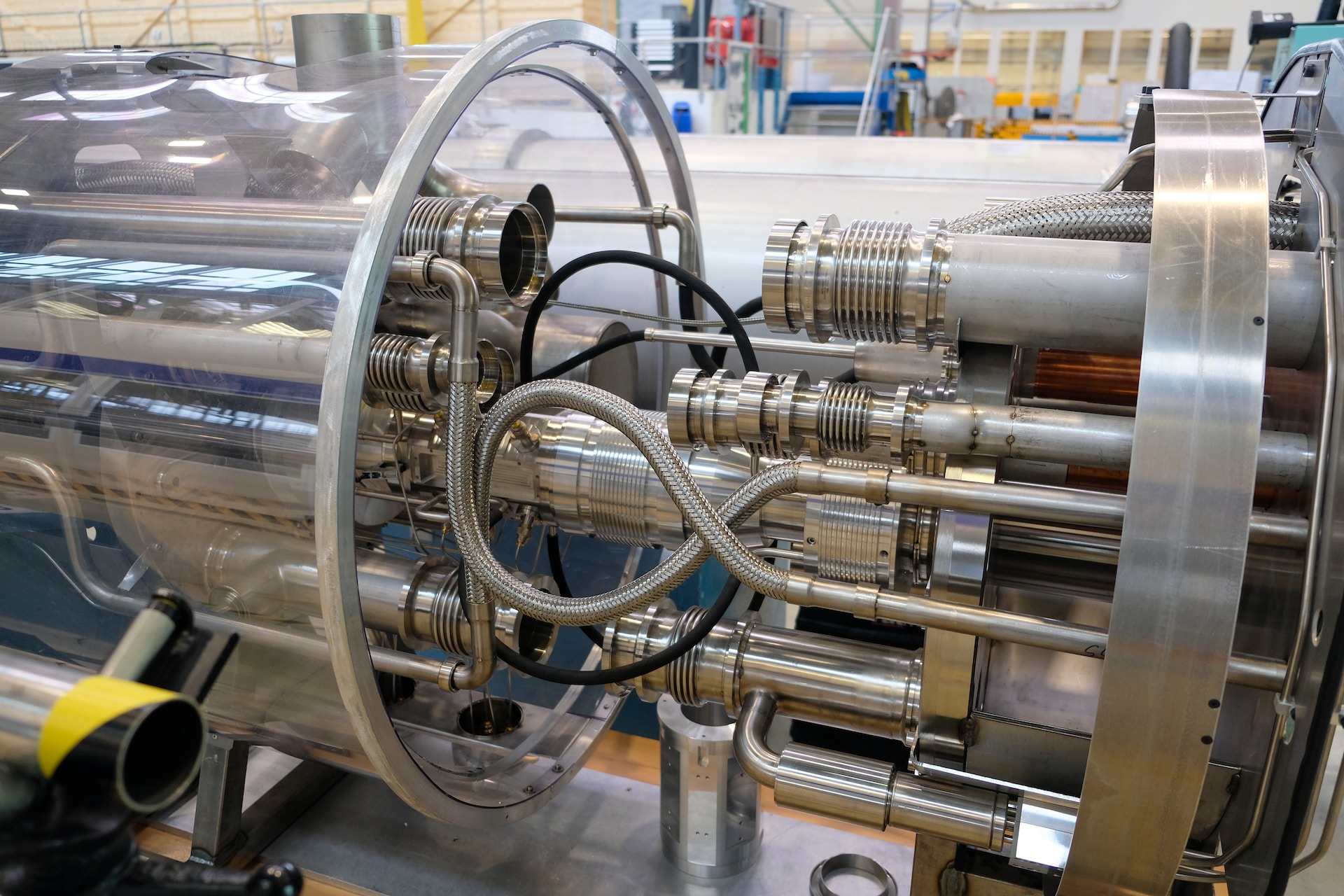Antimatter is the opposite of matter, from which everything we see is made. It has the same mass as matter, but opposite electric charge and other quantum properties. When matter and antimatter meet, they annihilate each other in a burst of energy. This makes it extremely rare and hard to find in the Universe.
How Antimatter Was Created
Scientists believe that equal amounts of matter and antimatter were created during the Big Bang, the explosive event that gave birth to our Universe 13.8 billion years ago. However, we observe that the Universe today is dominated by matter, while antimatter is scarce. This is one of the greatest mysteries of physics: what happened to all the antimatter?
What Happens When Matter Meets Antimatter
Scientists use powerful particle accelerators to smash matter particles together at high speeds, creating tiny amounts of antimatter particles. These particles are then trapped using strong magnetic fields and cooled down to near absolute zero, the lowest possible temperature.
When matter and antimatter particles collide, they destroy each other and release energy in the form of photons (gamma rays), neutrinos, and sometimes less-massive particle–antiparticle pairs. This process is called annihilation.
Why Antimatter Matters
Studying antimatter can help us understand the origin and evolution of the Universe, as well as test the fundamental laws of physics. For instance, one of the questions that physicists are trying to answer is whether antimatter behaves differently from matter under gravity.
According to Einstein’s general theory of relativity, which describes how gravity works, matter and antimatter should fall at the same rate. However, some physicists have speculated that antimatter might be repelled by gravity, which could explain why it is so scarce in the Universe.
How Antimatter Falls
To test this hypothesis, physicists at CERN’s Antimatter Factory have performed the first direct measurement of how antimatter falls under Earth’s gravity. They used a device called ALPHA-g, which can make, trap, and drop antihydrogen atoms, the antimatter version of hydrogen atoms.
The experiment involved pushing a cloud of thousands of antihydrogen atoms up a 3-meter-tall vertical shaft surrounded by superconducting electromagnetic coils. The coils then switched off, allowing the atoms to fall freely. By measuring how long it took for the atoms to reach detectors at different heights along the shaft, the physicists could determine how fast they fell.
The results showed that antihydrogen atoms fall downward, just like hydrogen atoms do. This confirms Einstein’s prediction and rules out the possibility of repulsive antigravity for antimatter. However, the experiment also showed that there is still a lot of uncertainty in the measurement, which means that there could be subtle differences between how matter and antimatter fall that have not been detected yet.
What’s Next for Antimatter Research
The physicists at CERN plan to improve their experiment by increasing the number and quality of antihydrogen atoms they can produce and trap. They also hope to measure how antihydrogen behaves in other ways, such as how it interacts with light and magnetic fields. These experiments could reveal new phenomena that are not predicted by the Standard Model or general relativity.
Applications of Antimatter
It is not only important for fundamental physics but also for potential applications in medicine and energy. Here are some examples:
- Positron emission tomography (PET): A type of medical imaging that uses positrons (antimatter electrons) to detect cancer cells. Positrons are injected into a patient’s body and emit gamma rays when they annihilate with electrons in normal tissue. A scanner then detects these gamma rays and creates a 3D image of the patient’s organs.
- Radiation therapy: A type of cancer treatment that uses beams of protons or carbon ions to destroy tumor cells. These beams can be generated by accelerating matter or antimatter particles in a cyclotron or a synchrotron.
- Industrial imaging: A type of non-destructive testing that uses positrons to inspect materials and structures for defects. Positrons can find atom-sized holes in metals, semiconductors, plastics, and other materials that could lead to cracks or failures.
- Energy production: A hypothetical source of clean and powerful energy that uses matter-antimatter annihilation. One gram of antimatter could produce more energy than 15 megatons of TNT. However, this idea faces many challenges, such as the difficulty and cost of producing and storing large amounts of antimatter.
Antimatter is indeed one of the coolest and most mysterious substances in the Universe. It has the power to unlock the secrets of our cosmos and transform our lives. By studying its properties and behavior, we can learn more about ourselves and our place in the Universe.





